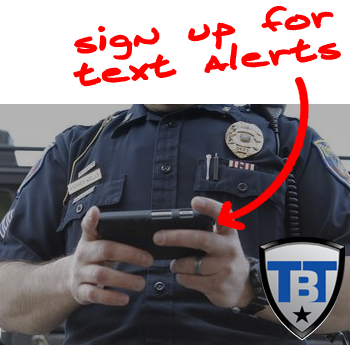Force Encounters Analysis: Understanding Human Performance in Critical Incidents
Description:FORCE ENCOUNTERS ANALYSIS IS THE MOST IMPORTANT LE TRAINING AVAILABLE TODAY.
The findings delivered in our course material have been directly credited with saving officer lives on the street, and preventing some officers from being unfairly convicted of criminal use of deadly force.
YOU CANNOT AFFORD TO FOREGO THIS TRAINING.
Force Encounters Analysis is a practical and understandable course, based on unbiased scientific evidence pertaining to officer involved use of force (UOF). The primary goal of the program is to assist LE professionals in applying ground-breaking concepts revealed in human performance research when engaging in force encounters, AND when investigating, reconstructing, recalling or otherwise analyzing a UOF incident. Coursework covers reaction times, perceptual distortions, narrowed vision, and memory gaps.
Using sound scientific principles, participants will come to understand the critical hidden truths about the physical and mental dynamics of life-threatening events, particularly office-involved shootings.
TOPICS INCLUDE SOME OF THE MOST CONTROVERSIAL FORCE ISSUES:
• How do we close the gap between public perception of LE and the threats we face daily?
• What is the root cause of skill, rule, and knowledge-based error?
• What techniques are available to better deal with threats?
• How does attention determine what we process and remember?
• Altered performance and decision-making under various levels of stress.
• How perceptual distortions & stress-induced memory gaps impact accurate recall.
• What actually happens to our useful field of view under stress?
• How do our shift schedules and fatigue affect our performance?
• Scientific facts on human performance and how long it takes to react to a lethal threat.
• Why we fire more rounds that the public perceives are necessary.
• Why officers in high adrenalin confrontations continue to fire after the threat has ended.
• Why are suspects shot in the back by well-trained officers making valid decisions?
• Investigative techniques to assist in analyzing factors that are often overlooked in use of force investigations.
• Facts from tactical science speed studies and how quickly suspects can launch an attack, as opposed to an officer who must take the time to determine threat before a taking action.
• Why might what we remember conflict with forensic evidence?
• How to analyze vital elements of a controversial use of force that are often overlooked.
The course is relevant for a wide range of law enforcement professionals including:
Sworn Officers, SWAT, Force Investigators, UOF Trainers, Critical Incident Teams
Managers & Supervisors, Police Psychologists, Internal Affairs
City Attorneys, Citizens Oversight Committees, Military Personnel
Course Terminal Learning Objectives:
Explain how Force Encounters Analysis training can close the perceptual gap between law enforcement and the public on OIS/UOF issues.
Apply the concepts of error management to a case study to determine the type of performance, type of error, and level of culpability.
Predict how nervous system components interact to determine different levels of attention.
Predict the physiological, perceptual, and cognitive factors that affect performance under varying levels of stress in a use of force or OIS.
Compare & contrast the advantages/disadvantages of body worn camera evidence for evidentiary purposes.
Predict the level of impairment due to fatigue caused by sleep loss and hours of wakefulness.
Determine when analytical and/or recognition-primed decision-making is appropriate and most effective.
Identify each of the six components of fractionated reaction time in an OIS situation.
Compute the reaction time for officers and suspects.
Explain how memory is acquired, stored, and retrieved.
Complete a comprehensive case study covering all aspects of the course.
Leading Human Factors Expert Craig E. Geis, (LTC US Army, ret.) MBA, MA, is Co-Founder and Director of Curriculum Development and Training at California Training Institute. Craig has an extensive background in error and risk management and is a Certified Force Science Analyst. As a career Army pilot, he developed the military’s Crew Resource Management (CRM) training program to address human error. LTC. Geis was the US Army’s Lead Safety Specialist in Aviation Human Factors and is a former psychology instructor at the U.S. Military Academy at West Point, as well as the former Director of Evaluation for The Army Organizational Effectiveness School and Center (OECS). Craig has served as an Associate Professor at the USC, providing instruction in courses on Safety Management and Human Factors. He has held instructor positions at Embry-Riddle Aeronautical University, U. of Maryland, and USF. He Craig holds an M.A. in Psychology from Austin Peay State University, a B.A. in Management from C.W. Post College in New York, and an MBA in Management from Georgia Southern College.
- Date: 09/26/2016
- Address: 810 East 10th Street Loveland, CO 80537
- Cost: $325
- Website: http://www.cti-home.com/courses-registration/
- Contact Person: Kathleen McCarthy
- Contact E-mail: kathymccarthy@cti-home.com
- Contact Phone: 7079685109
- Topics: Officer Survival, Use of Force, Body Worn Cameras, Media Relations, Internal Affairs,
Need any assistance? We're here to help. service@thinbluetraining.com
